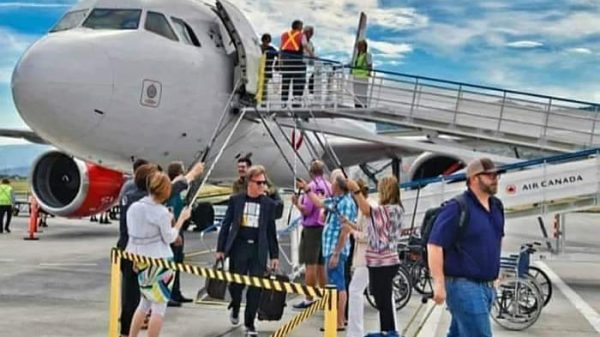Geography JAMB Past Questions And Answers (Objectives and Theory)
Geography questions with objectives and answers, followed by 5 theory questions and answers as Section B:
Section A: Multiple Choice Questions
Which of the following is the longest river in the world?
A) Nile
B) Amazon
C) Mississippi
D) Yangtze
Answer: A) Nile
What is the capital city of Australia?
A) Sydney
B) Melbourne
C) Canberra
D) Brisbane
Answer: C) Canberra
Which mountain range is located between Europe and Asia?
A) Rocky Mountains
B) Andes
C) Alps
D) Ural Mountains
Answer: D) Ural Mountains
What is the largest ocean on Earth?
A) Atlantic Ocean
B) Indian Ocean
C) Arctic Ocean
D) Pacific Ocean
Answer: D) Pacific Ocean
Which desert is the largest hot desert in the world?
A) Sahara Desert
B) Gobi Desert
C) Kalahari Desert
D) Arabian Desert
Answer: A) Sahara Desert
Which country is known as the “Land of the Rising Sun”?
A) China
B) Japan
C) South Korea
D) Vietnam
Answer: B) Japan
The Great Barrier Reef is located off the coast of which country?
A) Brazil
B) Australia
C) Mexico
D) South Africa
Answer: B) Australia
What is the capital city of Canada?
A) Toronto
B) Montreal
C) Ottawa
D) Vancouver
Answer: C) Ottawa
Which continent is known as the “Dark Continent”?
A) Africa
B) South America
C) Asia
D) Antarctica
Answer: A) Africa
The Amazon Rainforest is primarily located in which continent?
A) Africa
B) South America
C) Asia
D) North America
Answer: B) South America
Section B: Theory Questions
Discuss the concept of plate tectonics and its role in shaping Earth’s surface features.
Answer: Plate tectonics is the scientific theory that describes the movement and interaction of large sections of the Earth’s lithosphere, known as tectonic plates. These plates float on the semi-fluid asthenosphere beneath them and move relative to each other, leading to various geological phenomena such as earthquakes, volcanic eruptions, and the formation of mountains, valleys, and ocean basins. There are several types of plate boundaries, including divergent boundaries (where plates move apart), convergent boundaries (where plates collide), and transform boundaries (where plates slide past each other). At divergent boundaries, new crust is formed through volcanic activity, creating mid-ocean ridges. Convergent boundaries result in the subduction of one plate beneath another, leading to the formation of mountain ranges, volcanic arcs, and deep ocean trenches. Transform boundaries produce earthquakes as the plates slide past each other horizontally. Plate tectonics plays a fundamental role in shaping Earth’s surface features and influencing natural processes, including the distribution of continents and oceans, the formation of geological formations, and the distribution of resources.
Explain the concept of weathering and erosion, distinguishing between mechanical and chemical weathering processes.
Answer: Weathering is the process by which rocks and minerals are broken down into smaller particles over time, while erosion is the process by which these particles are transported and deposited by natural agents such as water, wind, ice, and gravity. Mechanical weathering, also known as physical weathering, involves the physical breakdown of rocks into smaller fragments without changing their chemical composition. This can occur through processes such as frost action (freeze-thaw cycles), abrasion (rock-on-rock collisions), and exfoliation (expansion and contraction due to temperature changes). Chemical weathering, on the other hand, involves the alteration of rock minerals through chemical reactions with water, oxygen, acids, and other substances. Examples of chemical weathering processes include hydration (water absorption), oxidation (reaction with oxygen), hydrolysis (reaction with water), and carbonation (reaction with carbon dioxide). Weathering and erosion work together to reshape Earth’s surface by breaking down and transporting materials, leading to the formation of landforms such as valleys, canyons, caves, and beaches.
Discuss the factors influencing climate and weather patterns on Earth, citing examples and illustrating their effects.
Answer: Climate and weather patterns on Earth are influenced by various factors, including latitude, altitude, proximity to water bodies, ocean currents, prevailing winds, and topography. Latitude plays a significant role in determining temperature and precipitation patterns, with regions near the equator experiencing warmer temperatures and higher rainfall, while polar regions are colder and drier. Altitude affects climate by influencing air pressure, temperature, and precipitation, with higher elevations generally experiencing cooler temperatures and greater precipitation. Proximity to water bodies moderates climate, leading to milder temperatures and higher humidity in coastal areas compared to inland regions. Ocean currents redistribute heat around the globe, influencing regional climate patterns, such as the Gulf Stream in the North Atlantic. Prevailing winds, such as the trade winds and westerlies, transport moisture and affect weather patterns, particularly in coastal regions and across continents. Topography, including mountains, valleys, and plains, can create microclimates by blocking or channeling air masses and influencing precipitation patterns. These factors interact dynamically to produce diverse climate zones and weather phenomena across the planet, shaping ecosystems, agriculture, and human activities.
Explain the concept of population distribution and its relationship with factors such as physical geography, economic opportunities, and cultural preferences.
Answer: Population distribution refers to the spatial arrangement of people across a given area, influenced by factors such as physical geography, economic opportunities, infrastructure, cultural preferences, and government policies. Physical geography plays a significant role in determining where people choose to settle, with factors such as climate, topography, water availability, and natural resources influencing habitability and land use. Economic opportunities, including employment prospects, access to education, healthcare, and infrastructure, attract people to urban centers and regions with thriving industries and services. Cultural preferences, traditions, and social networks also influence population distribution, as people tend to gravitate towards areas where they have familial, linguistic, or ethnic ties. Government policies, such as immigration laws, urban planning, and land use regulations, can either encourage or discourage population growth and settlement in specific areas. Population distribution patterns vary globally, with some regions experiencing high population densities due to favorable conditions, while others remain sparsely populated due to environmental constraints or economic disadvantages. Understanding population distribution is crucial for urban planning, resource management, and sustainable development efforts aimed at addressing demographic challenges and promoting equitable growth.
Discuss the concept of sustainable development and its significance in addressing environmental, social, and economic challenges.
**Answer: Sustainable development is an approach to economic growth and social progress that seeks to meet the needs of the present without compromising the ability of future generations to meet their own needs. It emphasizes the integration of environmental protection, social equity, and economic prosperity to achieve long-term sustainability and well-being.




